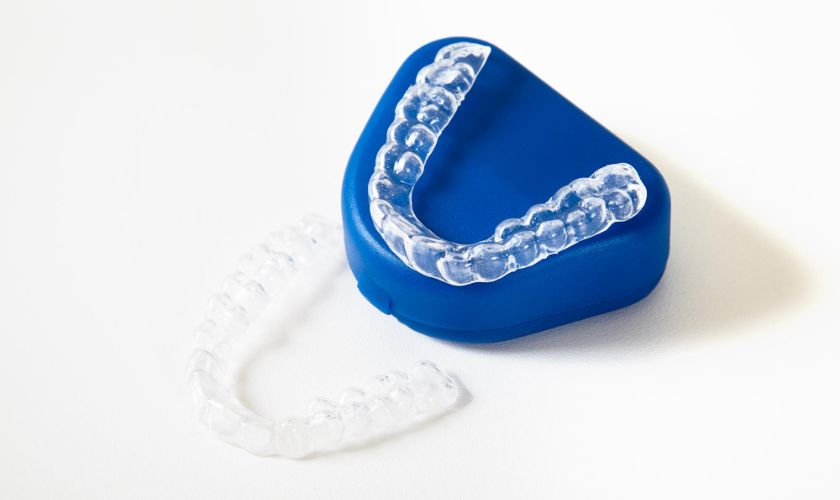Embarking on the journey to a straighter, more confident smile with clear aligners is an exciting step. However, while these modern orthodontic marvels offer unparalleled convenience and discretion, they require diligent care and adherence to guidelines. In this comprehensive guide, we delve into the world of clear aligners, shedding light on common mistakes that can hinder your progress. From neglecting oral hygiene to not wearing your aligners as prescribed, we’ll explore these pitfalls and provide invaluable insights on how to sidestep them. By the time you’ve navigated this article, you’ll be equipped with the knowledge to ensure a successful alignment journey, bringing you closer to the smile you’ve always desired.
Neglecting Oral Hygiene
1. Inadequate Brushing and Flossing:
– Neglecting to brush and floss after meals can lead to food particles and plaque getting trapped between your teeth and aligners.
– The build-up of bacteria can result in tooth decay, bad breath, and even staining of your aligners.
2. Not Cleaning Aligners Properly:
– Failing to clean your aligners regularly can result in a buildup of bacteria and odors.
– To avoid this, rinse your aligners with lukewarm water and gently brush them with a soft toothbrush. Using denture cleaner or specialized aligner cleaning crystals is also recommended.
Maintaining a rigorous oral hygiene routine is vital for the success of your clear aligner treatment and the overall health of your teeth and gums.
Not Wearing Aligners as Prescribed
1. Inconsistent Wear Time:
– Failing to wear your aligners for the recommended duration each day can significantly delay your treatment progress.
– Consistent wear, typically 20-22 hours per day, is crucial for achieving the desired results within the estimated timeframe.
2. Prolonging Aligner Use:
– Using a set of aligners for longer than prescribed can lead to compromised outcomes.
– Aligners are designed to make gradual adjustments, and prolonged use may result in discomfort, misalignment, or other issues.
Adhering to the recommended wear schedule is essential to ensure that your clear aligner treatment progresses effectively and produces the desired orthodontic results.
Poor Aligner Care
One common mistake to avoid when wearing clear aligners is poor aligner care. Neglecting to clean and care for your aligners properly can lead to staining, odors, and a less hygienic oral environment. It’s essential to follow recommended cleaning methods to ensure the longevity and effectiveness of your aligners throughout your orthodontic treatment.
Not Following Dietary Guidelines
1. Consuming Staining Foods and Drinks:
– Foods and beverages like coffee, tea, red wine, and strongly colored foods can stain clear aligners.
– Failing to avoid these items can lead to visible discoloration, affecting the discreteness of your treatment.
2. Eating Hard or Sticky Foods:
– Chewing on hard or sticky foods, such as ice, caramel, or nuts, can damage or dislodge your aligners.
– Sticking to a softer diet and removing aligners before eating can help prevent such issues.
Adhering to dietary guidelines is crucial to maintain the integrity and appearance of your clear aligners throughout your orthodontic treatment.
Skipping Dental Check-ups
1. Monitoring Progress and Adjustments:
– Regular dental check-ups allow your orthodontist to monitor the progress of your clear aligner treatment.
– They can make necessary adjustments to your treatment plan, ensuring that your teeth are moving as planned and addressing any issues promptly.
2. Maintaining Overall Oral Health:
– Dental check-ups not only focus on your orthodontic progress but also assess your overall oral health.
– Skipping these check-ups can lead to undetected problems like cavities or gum disease, which can impact your treatment and oral well-being.
Regular dental check-ups are a crucial part of ensuring the success of your clear aligner treatment and maintaining your overall oral health.
Self-Adjusting Aligners
1. Risk of Misalignment and Damage:
– Self-adjusting aligners, such as trying to move teeth manually, can lead to misalignment and even damage to your teeth.
– Attempting to alter your treatment plan without professional guidance can result in unexpected and undesirable outcomes.
2. Potential for Pain and Discomfort:
– Self-adjustment may cause pain, discomfort, or injury to your teeth, gums, or jaw.
– It’s essential to trust your orthodontist’s expertise and follow their guidance for adjustments to ensure a safe and successful treatment process.
Not Communicating with Your Orthodontist
1. Addressing Issues and Concerns:
– Failing to communicate changes or concerns with your orthodontist can lead to problems going unresolved.
– Open dialogue ensures that any discomfort, unexpected changes, or questions can be addressed promptly, improving your overall treatment experience.
2. Customized Treatment Adjustments:
– Your orthodontist relies on feedback and assessments to make precise treatment adjustments.
– Effective communication enables them to tailor your treatment plan to your specific needs, leading to more efficient and satisfactory results.
Maintaining a clear and open line of communication with your orthodontist is crucial for a successful clear aligner treatment journey. It ensures that your treatment remains on track and addresses any issues that may arise along the way.
Expecting Instant Results
1. Understanding the Gradual Nature of Orthodontic Treatment:
– Clear aligner treatment is a gradual process that involves gently shifting your teeth over time.
– Expecting immediate results can lead to frustration and disappointment, as noticeable changes typically take weeks or months.
2. Setting Realistic Expectations:
– It’s important to have realistic expectations and understand that orthodontic treatment requires patience.
– Trust in your orthodontist’s expertise and the treatment plan they’ve outlined for you to achieve the desired results in due time.
Clear aligner treatment is a journey, and while it may not yield instant results, the end result of a beautifully aligned smile is well worth the wait.
Source : Smile Pop – Dr. Courtney Barry
In the quest for a straighter smile with clear aligners, avoiding common pitfalls is essential. Neglecting oral hygiene, disregarding dietary guidelines, and self-adjustment can hinder progress. Regular dental check-ups, adherence to guidelines, and open communication with your orthodontist are key to a successful and satisfying clear aligner journey.




